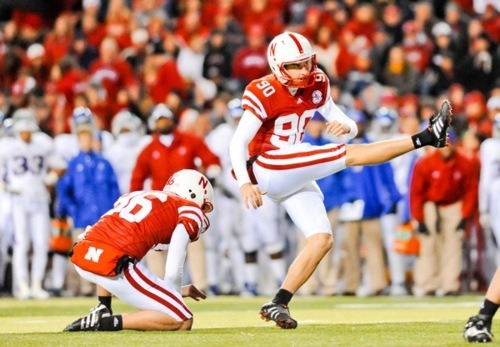
I’ve largely supported the Eagles’ decision to draft Nebraska kicker Alex Henery last month. Like everyone else, at first I was surprised. But after about 60 seconds, the reality set in and I started to realize that the writing was already on the wall regarding David Akers’s future.
Plus, unlike many other commentators, I didn’t really mind that the Eagles jumped on Henery in the fourth round. Partially that’s because I get annoyed with baseless pronouncements of value, but also I think that the Eagles front office showed some guts with this move. If you’re Howie Roseman and you’ve come to the conclusion that the Akers era is over, why not go for the best kicker in the draft instead of waiting around to pick up a journeyman or two?
However, after poking around at kicker statistics some more, I’m no longer quite so optimistic. Let me just throw the numbers at you.
Since 2000, NFL teams have drafted 24 different kickers, mostly in the fourth through seventh rounds. (Sebastian Janikowski, Mike Nugent, and Nate Kaeding are the only exceptions.) Of those 24, only half started even 8 games their rookie year. A number of them didn’t make the team out of training camp and a few more lost their jobs after just a few games. Then, just counting the 12 who played the majority of their rookie year, their average field goal and extra point DVOA (which compares field goals to the league average from that distance) was actually negative: -1.78.
It was unrealistic for me to think that rookie kickers could step in and perform as well as veterans right away. Perhaps I was fooled by the idea that field goals remain basically the same from college to the NFL. But the problem is that kicker, unlike most positions, typically requires an all-or-nothing commitment. Most teams can’t afford to keep two kickers on the roster, so you either have to stick with your rookie and expect some problems, or kick him to the curb before he’s even gotten a real chance.
There is a case for hope. Of the 12 kickers who started in their rookie seasons, their average DVOA improved over the next two years to 0.68 and then 1.64. So by their third season — if they make it that far — the kickers have mostly become above average.
But despite that possibility, no one should be under any delusions that Henery will be able to step in without any problems his first year and provide the veteran consistency Akers provided us for the last decade. I’m certainly not operating under that assumption any more.
Originally published at NBC Philadelphia. Photo from Getty.